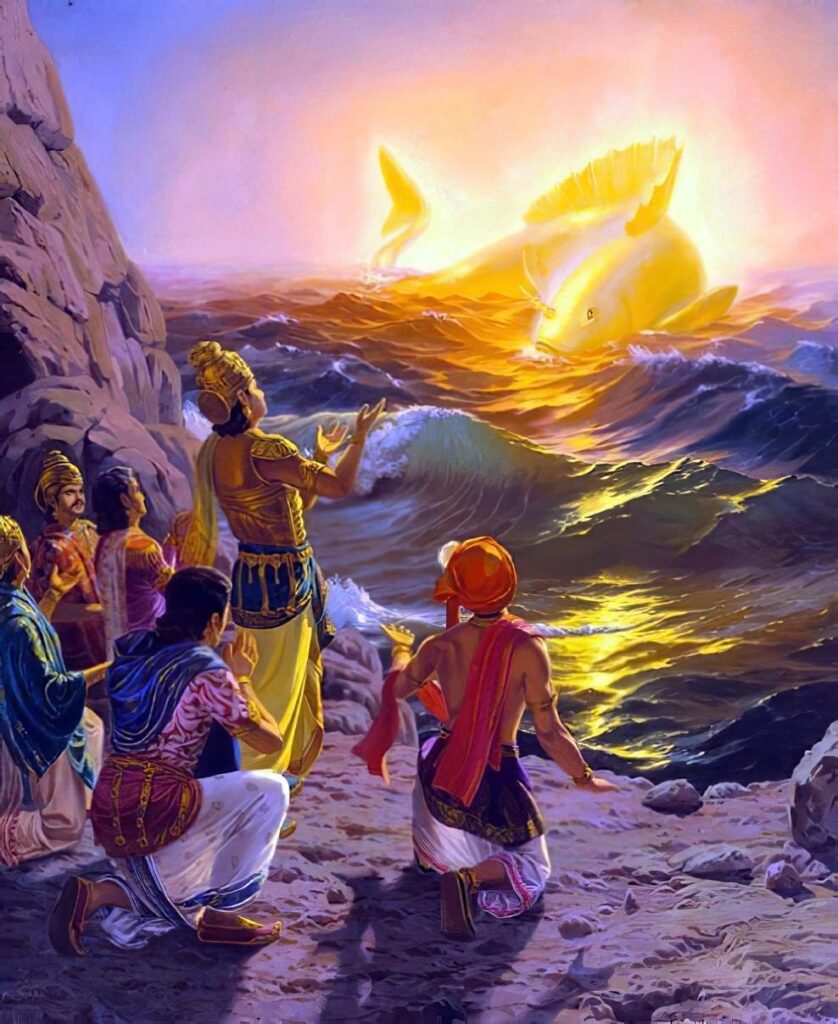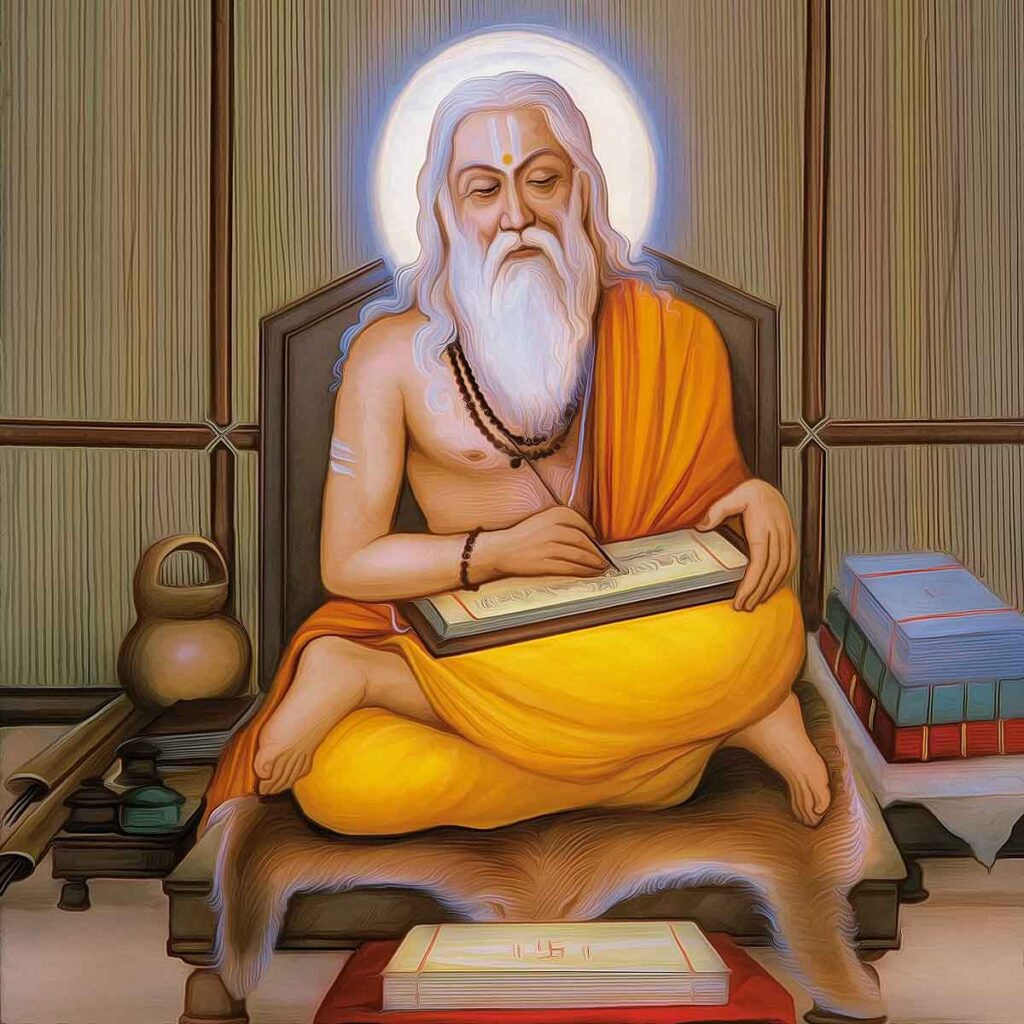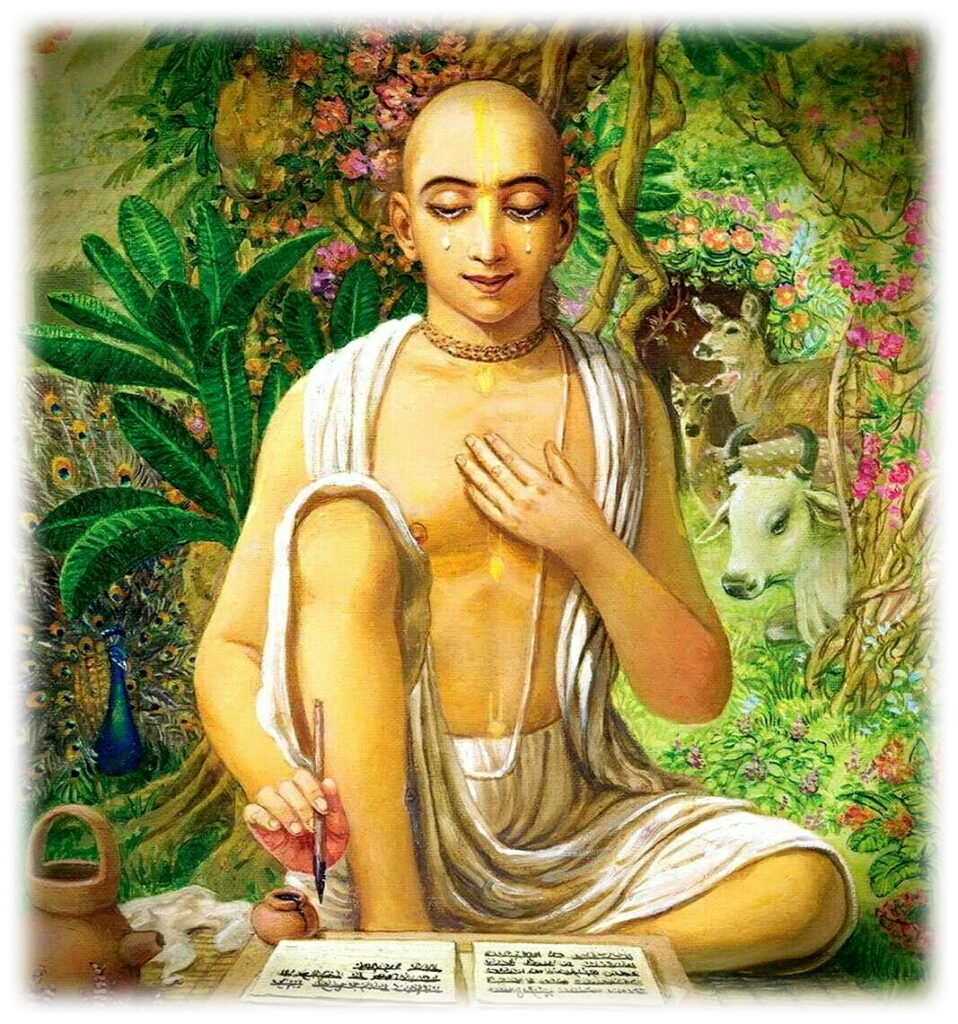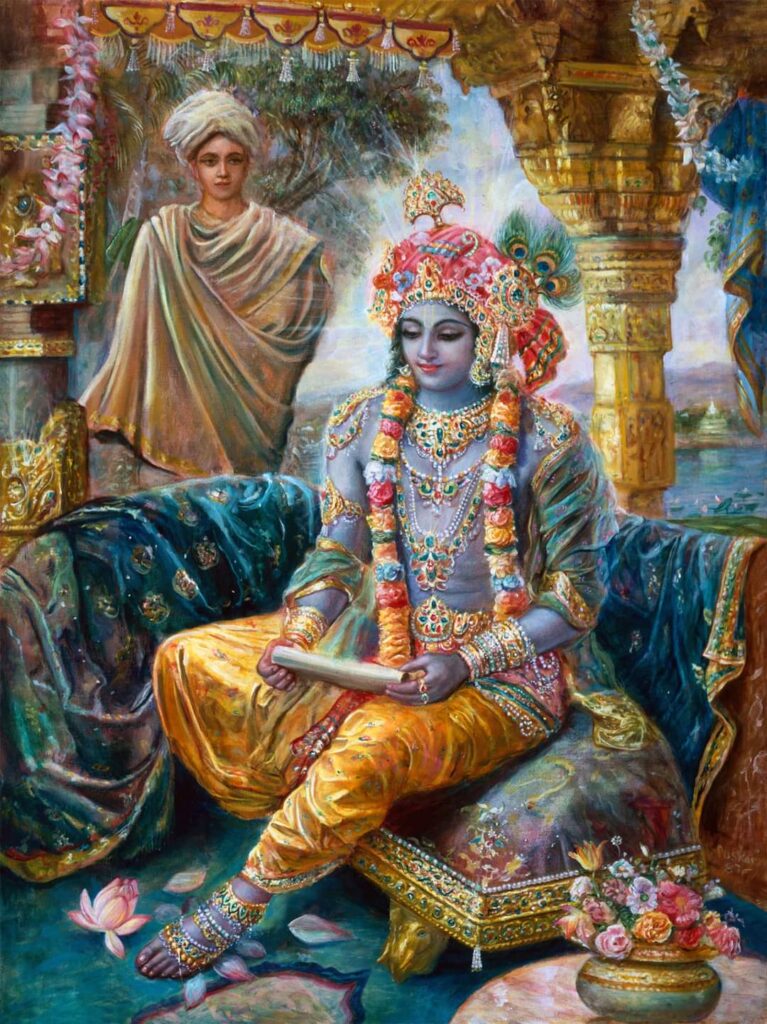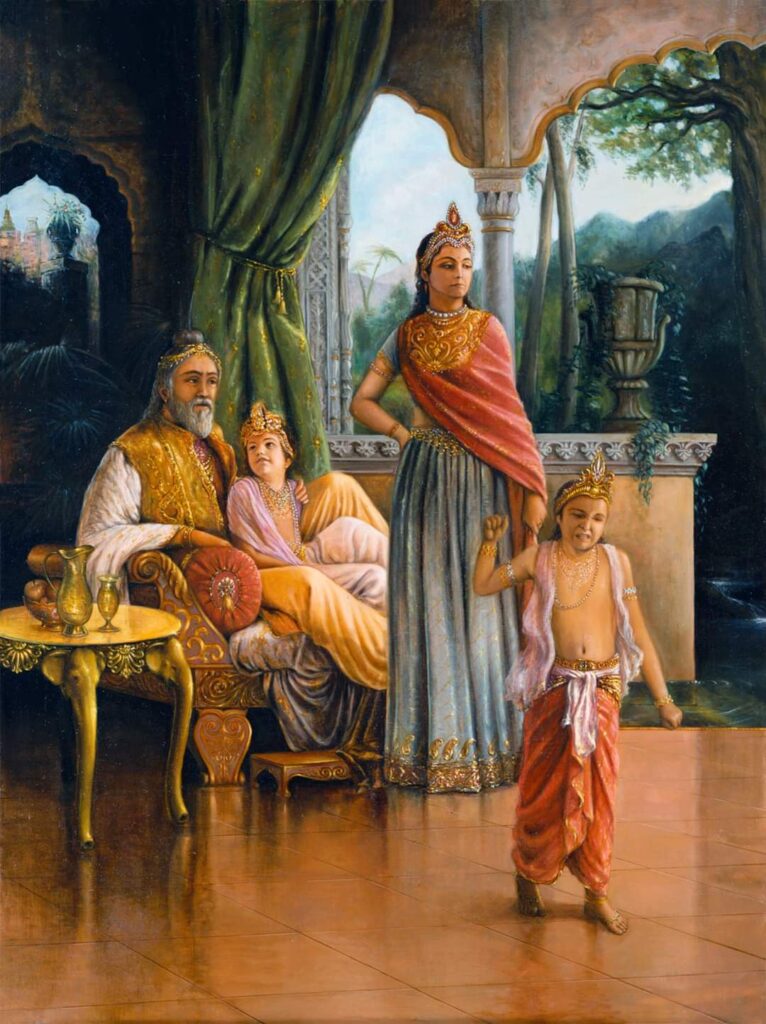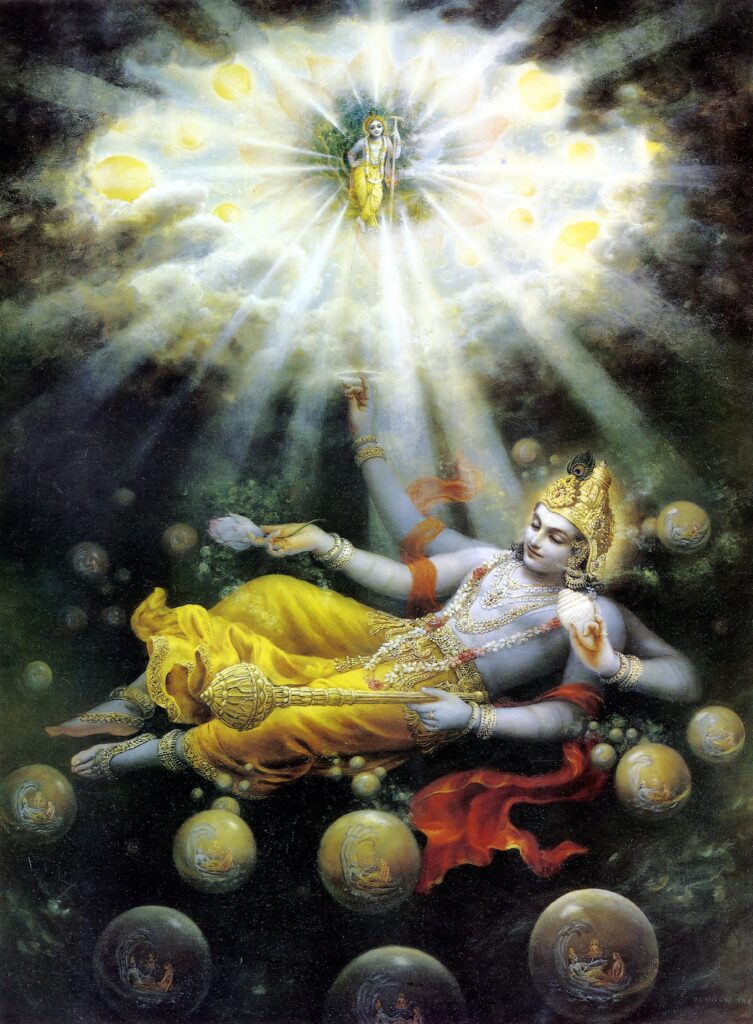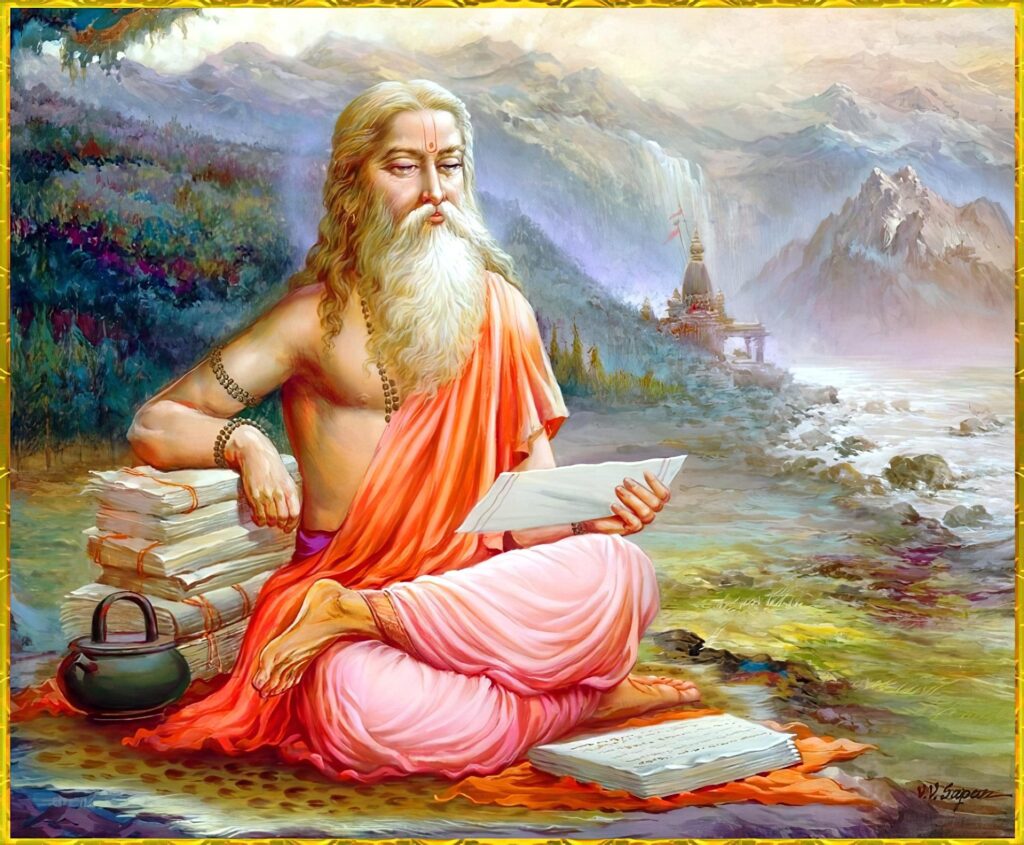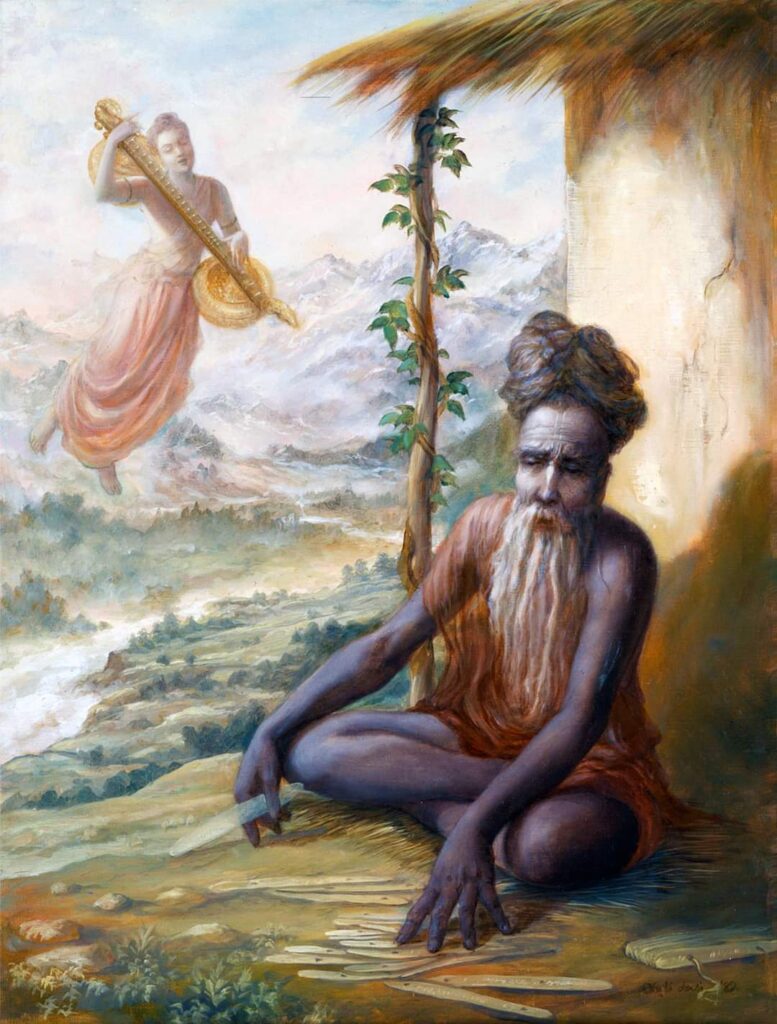As described in the Srimad Bhagavatam, even after compiling all the Vedas, Vyasadeva was still dissatisfied at heart. To convince Vyasadeva of the value of devotional service to the Lord, Narada Muni describes his own story. In the past life, he was the son of a maidservant who became self-realized by having the opportunity to associate with a group of pure devotees, hearing their discussions about the pastimes of the Lord and serving them.
Even being just a small child, who didn’t have an opportunity of getting an education, Narada had the opportunity of serving these great sages alongside his mother. Although he was just a small child. Narada got a taste for hearing their talks about the pastimes of Krsna and once was able to honor their mahaprasadam.
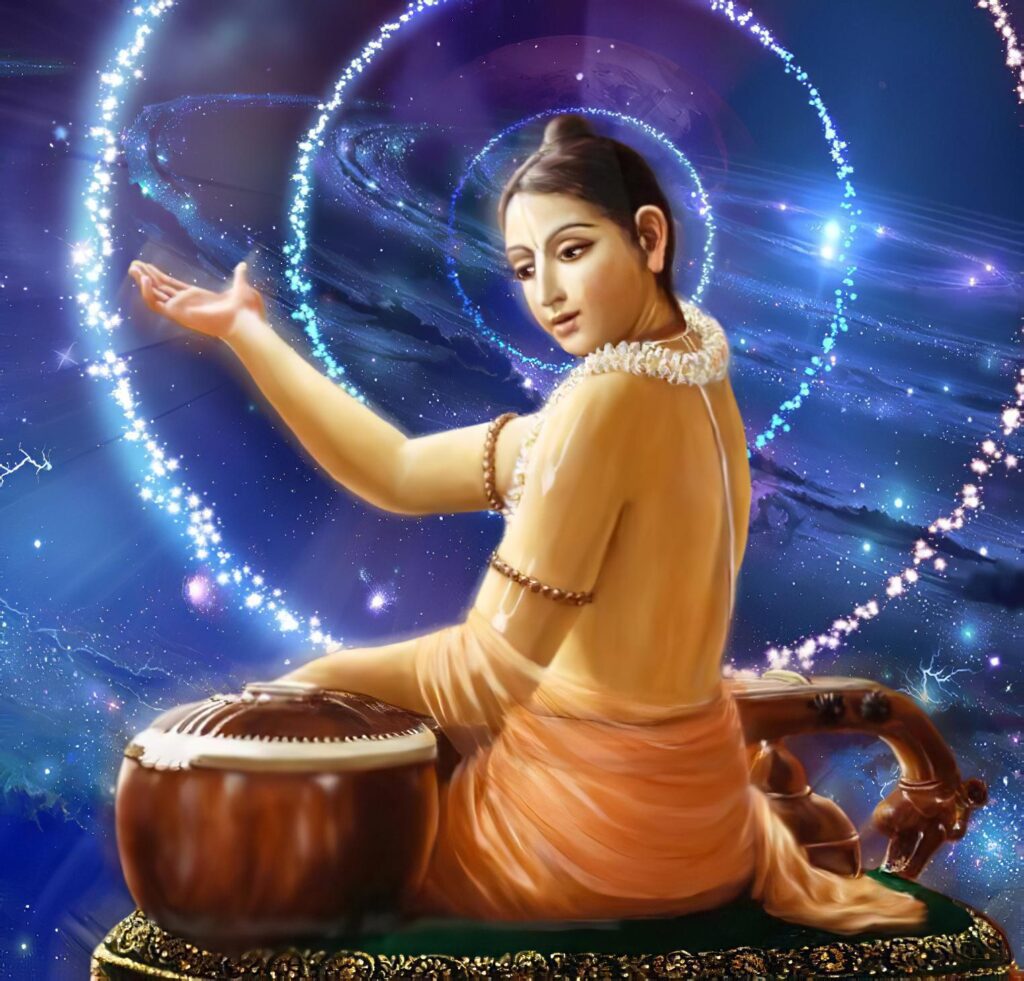
We can see that this story is a practical example of the principle of naṣṭa-prāyeṣv abhadreṣu described in the second chapter (By regular hearing and service to the pure devotee, all anarthas are almost completely destroyed, and loving service is established).
Narada was a simple, pious boy, who was not naught and had no attachment for plays and sports. Both he and his mother were living in an asrama and serving the different visitors who would come. A group of sages stayed there during the period of chaturmasya, the four months of the rainy season in India. During these months, there are many floods and the roads become impassable. Even great sages and devotees used to refrain from traveling during these months, using instead the time for executing austerities and concentrating on their spiritual practice. Narada was especially fortunate because a group of Bhaktivedantas (pure Vaishnavas very well-versed in the scriptures) stayed with them and invested their time in deep devotional discussions about the pastimes of the Lord. Although just a small child, Narada was naturally attracted to these meetings, and thus he had the good fortune of associating with these sages.
It’s said that devotional service is highly transmissible. Just like one may easily contract a disease by staying close to the sick, one can contract the “disease” of devotional service by serving pure devotees.
Apart from listening and serving them together with his mother, Narada just once ate the remnants of food left by the sages. This can be done even without asking permission, but being such a polite boy, Narada asked them and ate the Mahaprasadam after receiving their permission.
As he narrates: “Once only, by their permission, I took the remnants of their food, and by so doing all my sins were at once eradicated. Thus being engaged, I became purified in heart, and at that time the very nature of the transcendentalist became attractive to me.” (1.5.25)
By serving and taking this mahaprasadam, Narada quickly became very advanced in spiritual realization, but he was still bound to the position of a dependent child by the affection and care of his mother. Due to this, when the Bhaktivedantas left, he was not able to accompany them.
However, after a short time, the mother of Narada passed away after being bitten by a snake. Instead of becoming morose, Narada accepted it as the will of providence. This is also a lesson for us: often the Lord uses material difficulties as a way to move us around and make us spiritually qualified. By understanding that the Lord is just in the process of giving us something better, we can face these situations without lamentation.
He cremated the body of his mother by burning the whole house they were living in and started traveling alone. By practicing meditation he was quickly able to see the Lord for a short while. By seeing the Lord, the spiritual senses of Narada immediately awakened. While we are in this body, we need to do one thing at a time, but in a spiritual body, all the senses work independently and there is no such limitation. Narada describes this experience on 1.6.17:
“O Vyāsadeva, at that time, being exceedingly overpowered by feelings of happiness, every part of my body became separately enlivened. Being absorbed in an ocean of ecstasy, I could not see both myself and the Lord.”
This verse proves something that Prabhupada mentions in different passages. He explains that our spiritual body is part of the soul, and is thus present in us even now. It’s just covered by the material body, as well as the mind, intelligence, and so on. When these external layers are removed, the spiritual body automatically manifests. It doesn’t have to be gained from some separate source. We can see that in the case of Narada, as soon as he saw the Lord his spiritual body became active.
However, after just a moment the Lord disappeared. Narada tried again and again to repeat the same process of mechanical meditation but without success. At this point, he heard a voice saying:
“O Nārada [the Lord spoke], I regret that during this lifetime you will not be able to see Me anymore. Those who are incomplete in service and who are not completely free from all material taints can hardly see Me.”
O virtuous one, you have only once seen My person, and this is just to increase your desire for Me, because the more you hanker for Me, the more you will be freed from all material desires.
At this stage, Narada was in the stage of Brahma-bhuta, he had become free from material contamination due to the association of the sages, but he hadn’t come yet to a platform of devotional service.
There are two steps in our spiritual realization: one is negative, becoming free from lust, anger, different material desires, and so on. This culminates in the stage of Brahma-bhuta, or liberation when we become free from all material contamination. This negative process can bring us all the way to the impersonal Brahmajoti, but not further. After this, however, there is also the positive process of reviving our pure love for the Lord, which allows us to enter into the spiritual planets.
Srila Prabhupada hints at the purports that Narada was at this point situated in the mode of goodness. Material goodness is very close to spiritual goodness, but as long as one doesn’t develop pure love for Krsna, some traces of material contamination will remain. That’s why the Lord says to Narada that “Those who are incomplete in service and who are not completely free from all material taints can hardly see Me.”
Srila Visvanatha Cakravarti Thakura mentions in his commentary that Narada was actually at the platform of Prema at this stage, but the Lord spoke to him like this to increase his humility and teach him to be perfectly situated in Krsna Consciousness, transcending the material mode of goodness and in the process leaving his example for us to follow.
Small apparent disagreements like these are common in the comments of different acaryas because they comment on the texts from different points of view. The process to understand these differences is not trying to judge who is right and who is wrong, but to harmonize the different purports, understanding that they are all correct, and is our understanding that must be adjusted in a way that we can see all the different points as parts of a unified explanation.
Back to the pastime, the Lord thus told Narada that although he had become purified of material contamination, he still had to practice more and develop this pure love. This short darshan was causeless mercy to help him become more desirous of achieving this stage.
Most of us have also some similar experiences at the beginning of our spiritual lives. Often in the beginning we see the temple as the best place, devotees as saints, and the deities as the Lord Himself. Prasadam is the most wonderful food, and doing any small service is complete bliss. This is actually reality, that’s how things really are, and the Lord in the heart gives us a taste of it, so we can become determined in spiritual practice. However, after a little while this fades and we again see things according to our imperfect realization. Now we have to practice and become purified so we can again start seeing things as they are, just like Narada had to practice for more time in order to mature his devotional service and see the Lord again. The more we hanker for the Lord, the quicker we become free from all material desires.
Narada had this darshan of the Lord when he was still a small child. He then continued practicing until he became an old man. During this time, his natural love for the Lord developed. When he eventually met with death, his material body died, while his spiritual body simultaneously became active, just like lightning and illumination appear simultaneously.
At this point, his spiritual body manifested, a body that was fit for a personal associate of the Lord. The mission of Narada Muni is to travel everywhere, teaching the science of devotional service. He is counted as one of the incarnations of the Lord because he is especially empowered to do so. He can thus freely travel in both material and spiritual words, meeting everyone and transmitting the transcendental message. He is especially empowered to always be at the right place and at the right time, and we can see that he participates in many of the pastimes narrated in the Srimad Bhagavatam, always appearing at the exact time to give important spiritual instructions.

